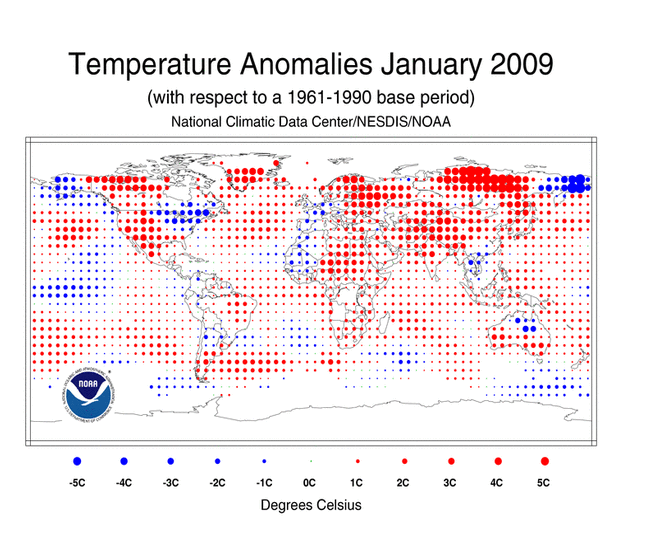

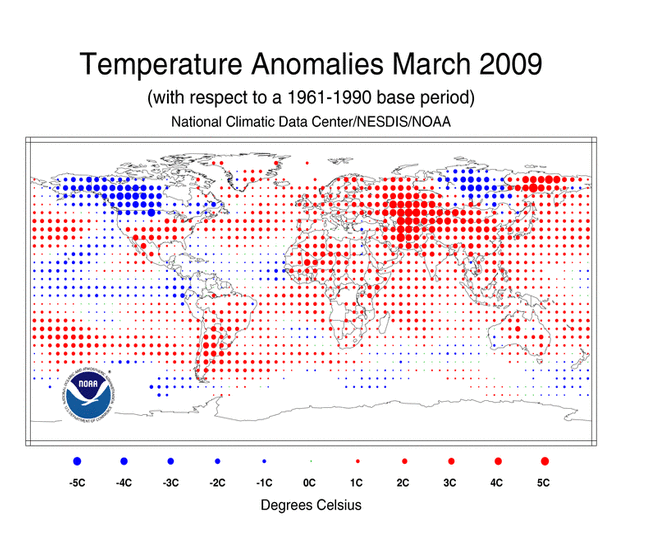
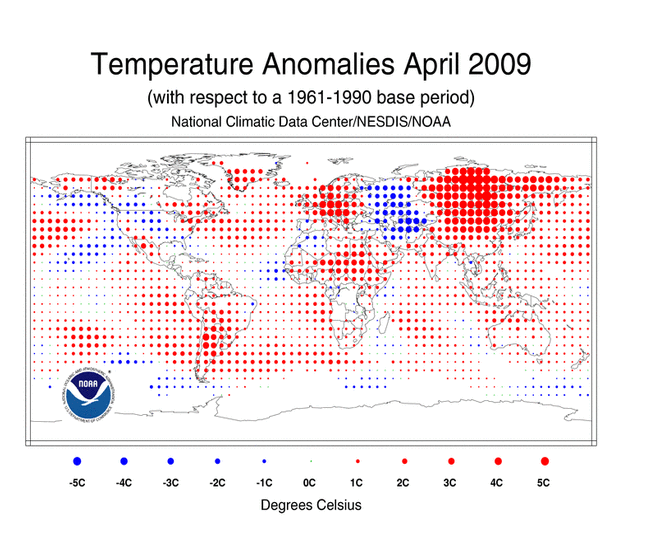
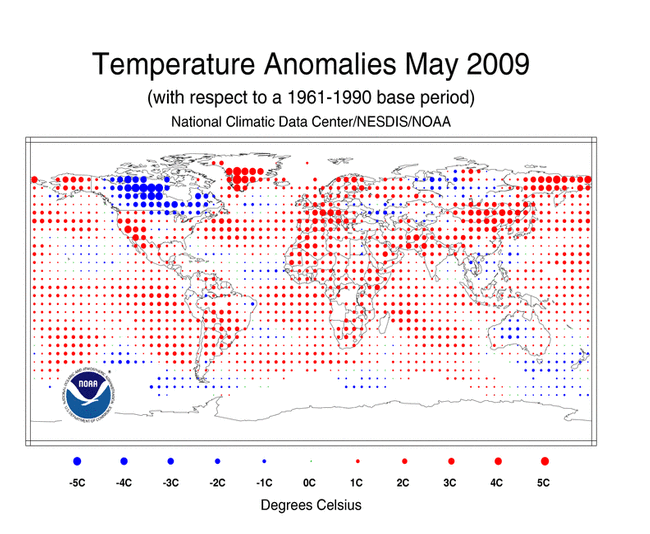
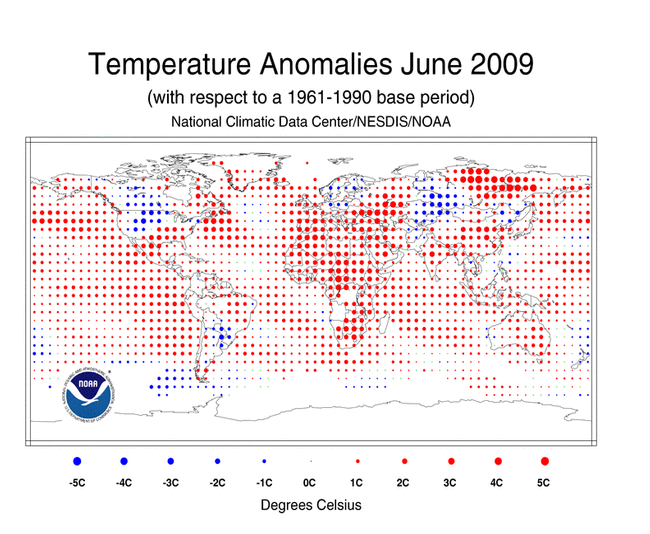
Its Called "Global Warming", Not "Nebraska Warming", Not "U.S. Warming"
Year 2009 Review
| The concept here is simply that it may be cooler than normal in a region or for the entire U.S. but if the majority of the earth is warmer than normal, then we call it global warming. The following maps show the monthly and then annual global temperature departures from normal and then the monthly and annual state temperature rankings. A table is included which summarizes this information. Note that the state rankings are based upon 1 = coldest and 115 = warmest. |
Global Data
1880-2009:(130 years)
Jan. 2009: 7th Warmest
(Much Above Normal)
Feb. 2009: 9th Warmest
(Much Above Normal)
Mar. 2009: 10th Warmest
(Much Above Normal)
Apr. 2009: 5th Warmest
(Much Above Normal)
May 2009:
4th Warmest
(Much Above Normal)
June 2009: 2nd Warmest
(Much Above Normal)
July 2009: 5th Warmest
(Much Above Normal)
Aug. 2009: 2nd Warmest
(Much Above Normal)
Sep. 2009: 2nd Warmest
(Much Above Normal)
Oct. 2009: 6th Warmest
(Much Above Normal)
Nov. 2009: 4th Warmest
(Much Above Normal)
Dec. 2009: 8th Warmest
(Much Above Normal)
Year 2009: 5th Warmest
(Much Above Normal)
Nebraska Data
1895-2009:(115 years)
Nebraska
Data 1895-2009:(115 years)
Jan. 2009: 83rd Coldest or
32nd Warmest
(Above Normal)
Feb. 2009: 87th Coldest or
28th Warmest
(Above Normal)
Mar. 2009: 65th Coldest or
50th Warmest (Near Normal)
Apr. 2009: 29th Coldest or
86th Warmest
(Below Normal)
May 2009: 63rd Coldest or
52nd Warmest (Near Normal)
June 2009: 33rd Coldest or
82nd Warmest
(Below Normal)
July 2009: 6th Coldest or
109th Warmest
(Much Below Normal)
Aug. 2009: 15th Coldest or
100th Warmest
(Below Normal)
Sep. 2009: 31st Coldest or
84th Warmest
(Below Normal)
Oct. 2009: 2nd Coldest or
113th Warmest
(Much Below Normal)
Nov. 2009: 109th Coldest or
6th Warmest
(Much Above Normal)
Dec. 2009: 8th Coldest or
107th Warmest
(MUCH Below Normal)
Year 2009:
17th Coldest or 98th Warmest (Below
Normal)
|


























|
School of Natural Resources  |